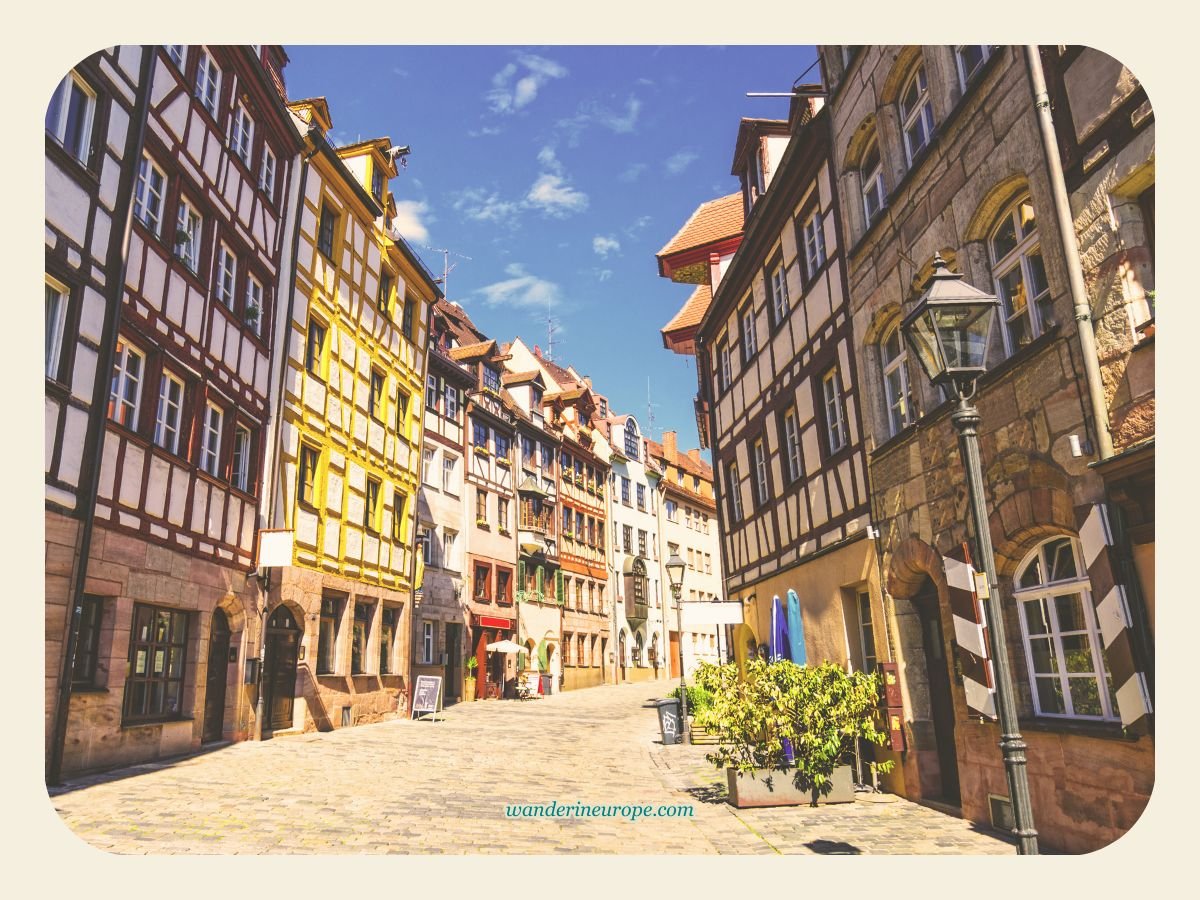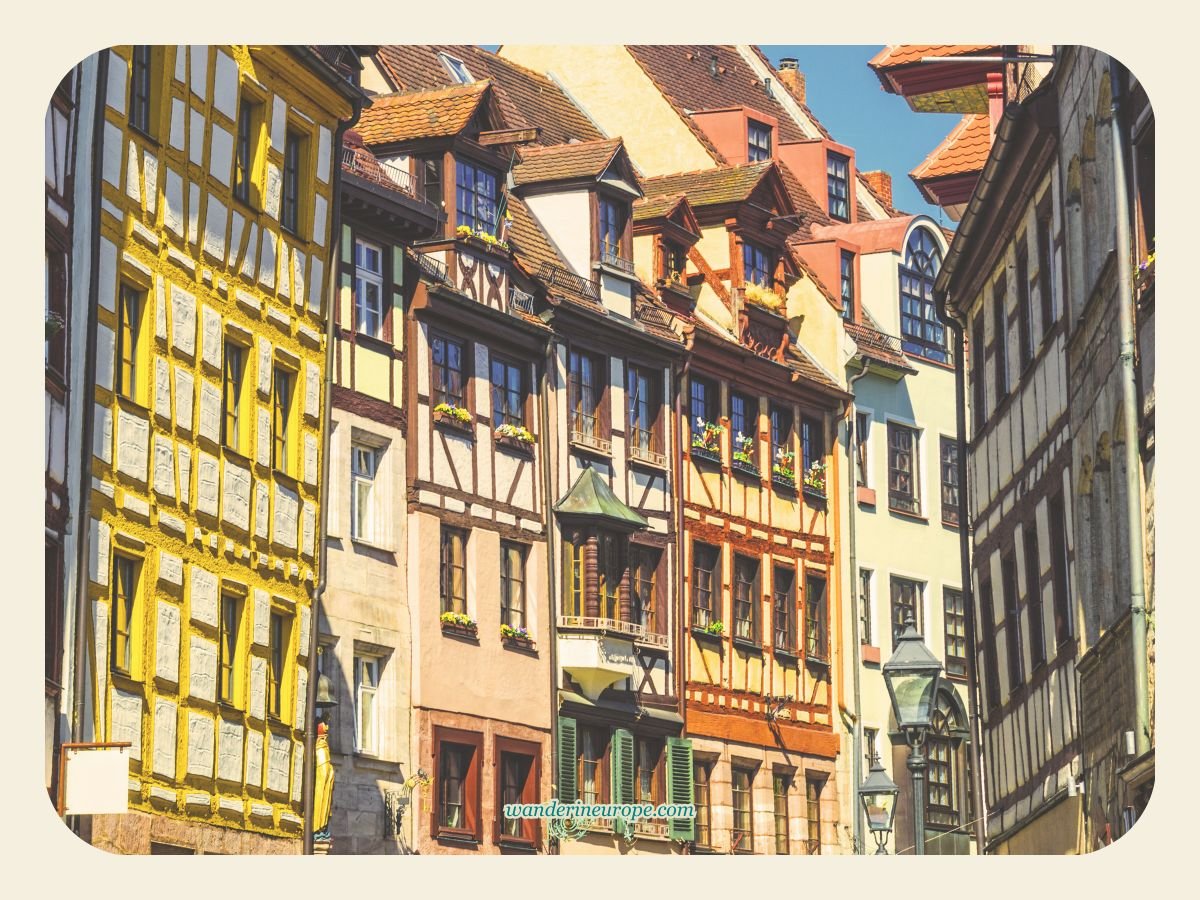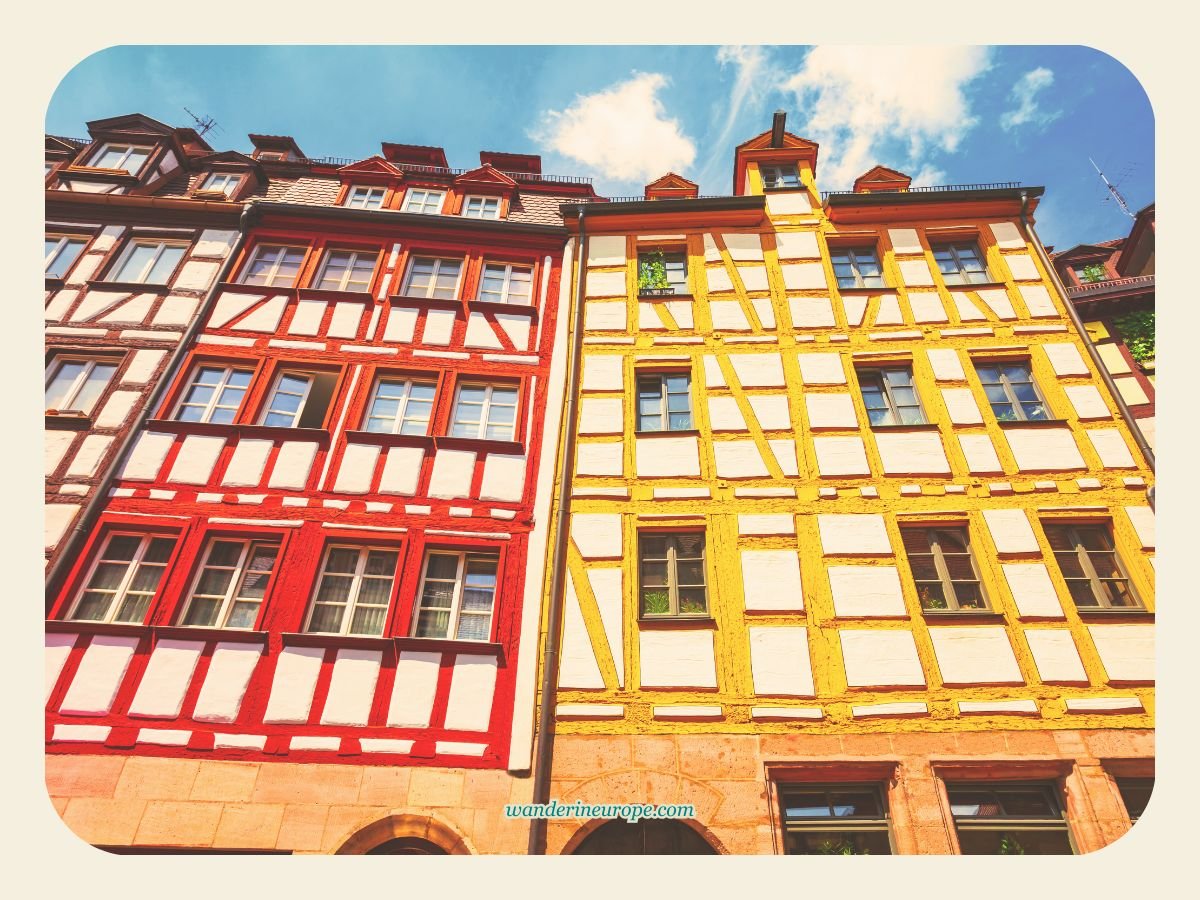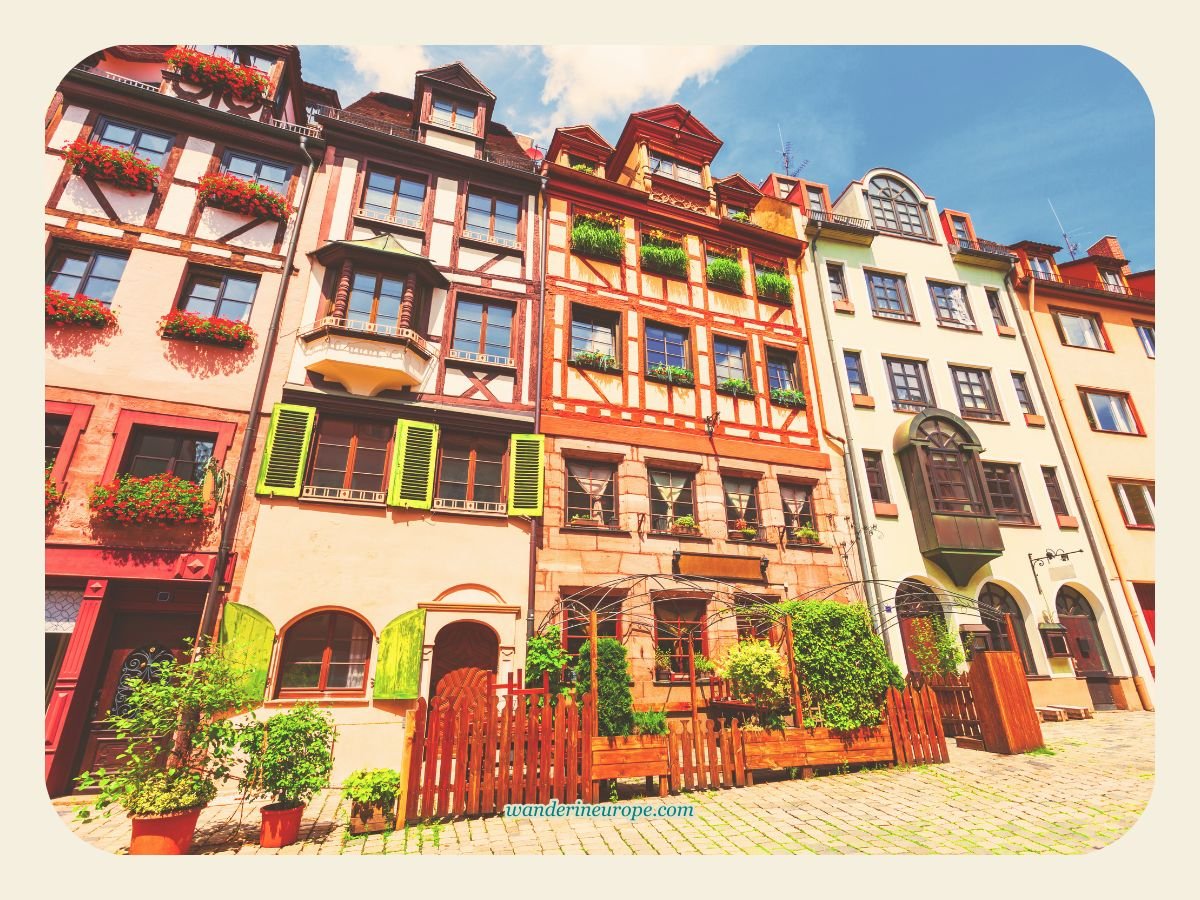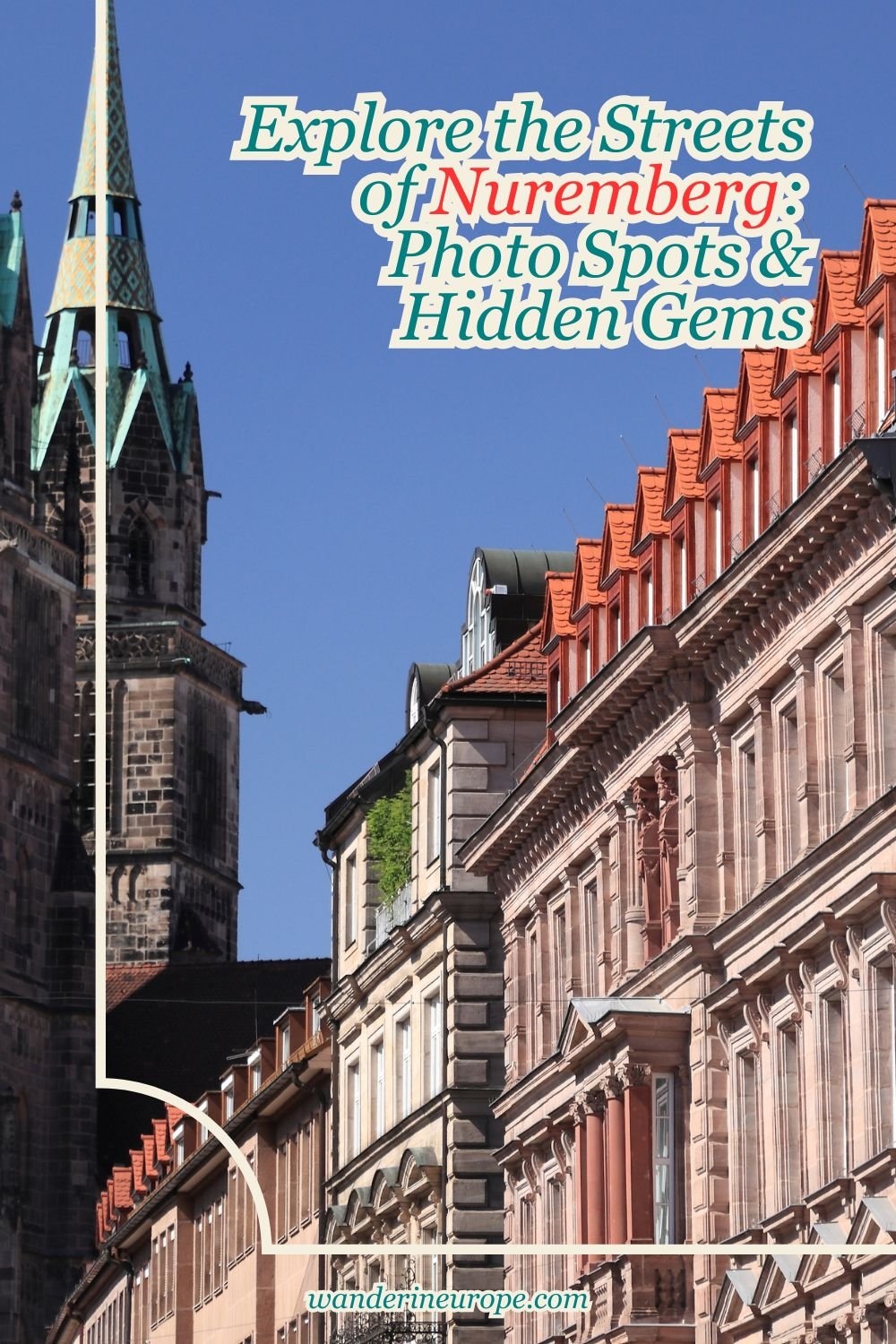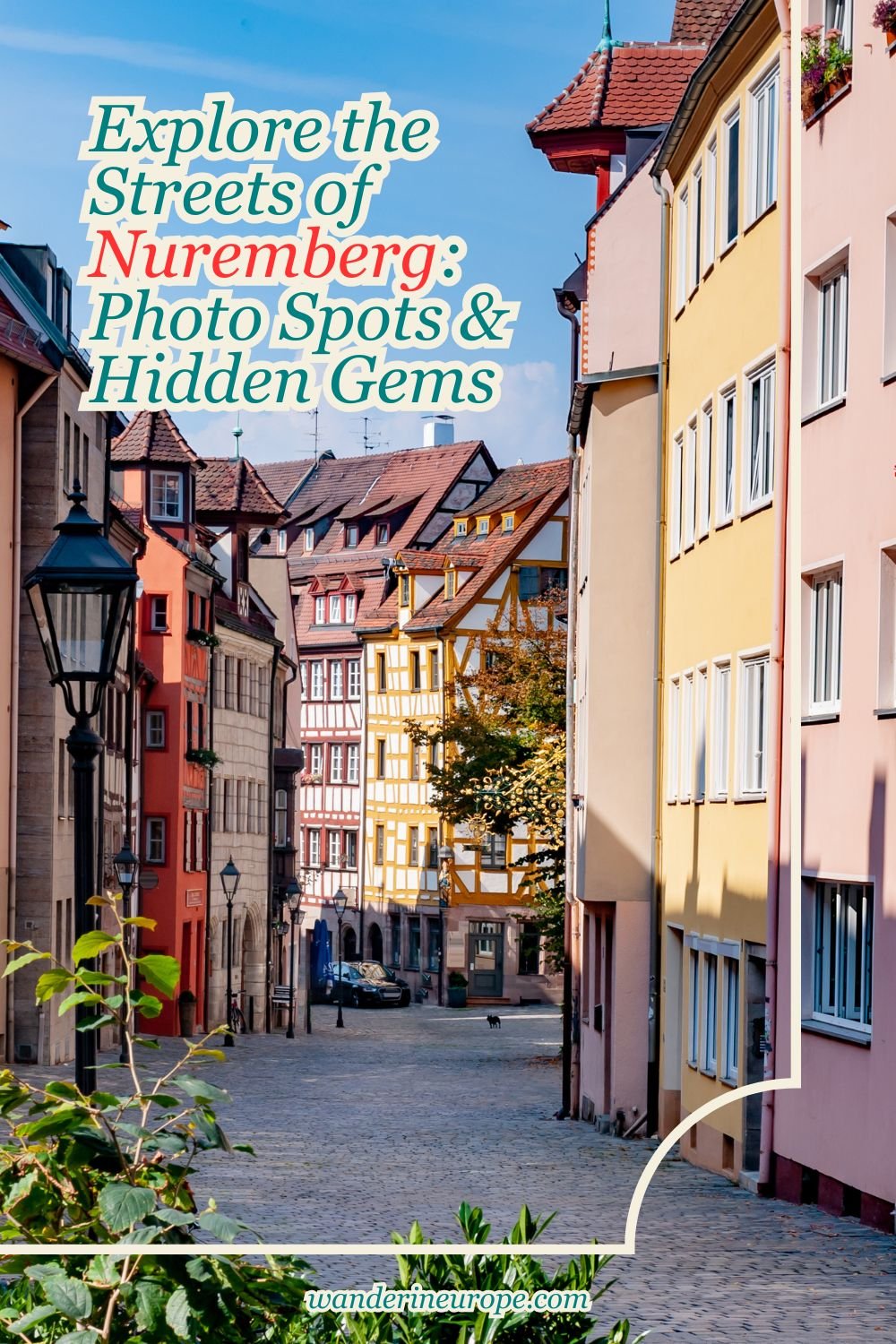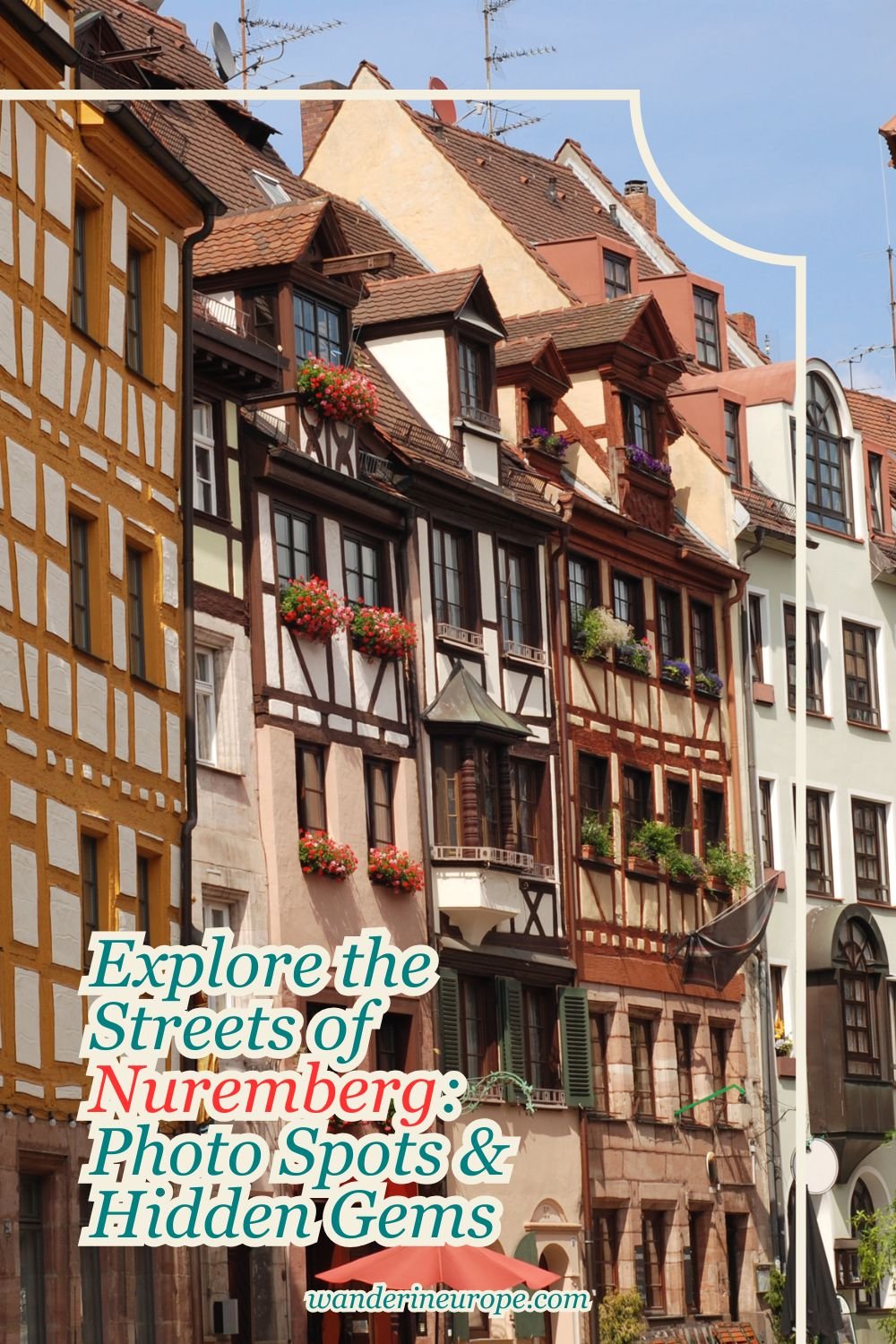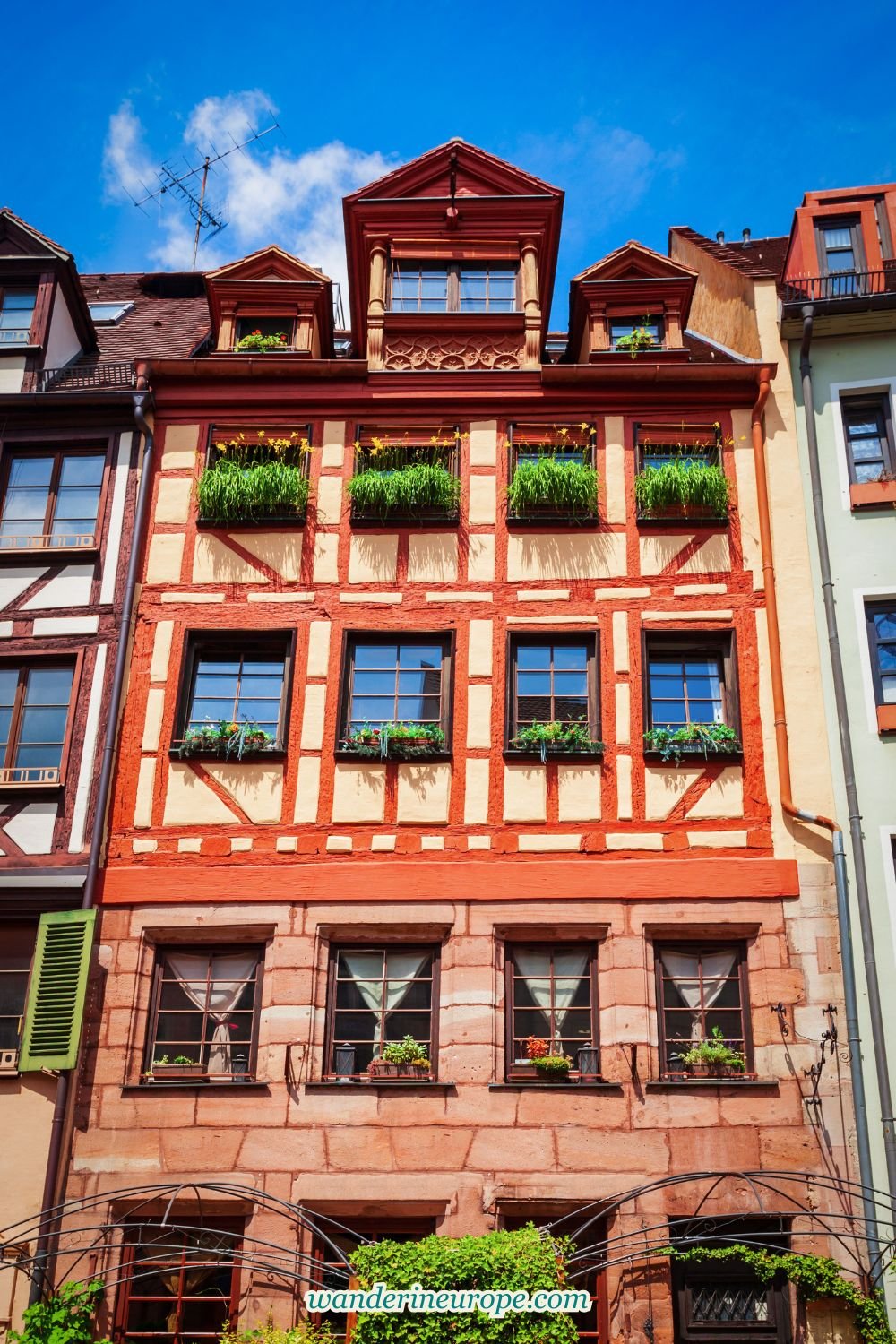Explore the Streets of Nuremberg: Photo Spots & Hidden Gems
WanderInEurope is reader-supported. Affiliate links and ads help us keep creating useful content for you.

Weissgerbergasse
One of the best examples of this time-transporting street in Nuremberg is Weissgerbergasse, home to what I believe is the largest collection of old artisan houses in the city. Even better, the street is dotted with cozy cafes and charming shops where you can take in the atmosphere. Tip: For more picture-perfect spots, don’t miss Hauptmarkt, Rathausplatz, and Tiergärtnertor.

Ehekarussell
One of the most intriguing things you’ll come across on the streets of Nuremberg is the Ehekarussell fountain.
It’s this fountain in Ludwigsplatz, right by the White Tower. Go there, and it will immediately grab your attention. It was created in 1984 by an artist named Jürgen Weber and is based on a poem called Bitter-Sweet Married Life by Hans Sachs. The fountain features six bronze sculptures that tell the story of marriage, capturing all its ups and downs—everything from the excitement of falling in love to arguments, growing older, and even the end of life.
What makes it so unique is how the sculptures bring out so much emotion. Some parts are funny, others are raw and even a little uncomfortable, but that’s what makes it feel so real. Standing there, you can’t help but think about how love can be messy and imperfect but still incredibly meaningful.



Schönerbrunnen
There’s another amazing fountain in Nuremberg called the Schöne Brunnen, right on the Hauptmarkt next to the City Hall.
It was built way back between 1385 and 1396 by this guy Heinrich Beheim, making it one of the oldest fountains around. When you get close, you’re greeted by this towering structure, standing about 19 meters tall, looking just like a Gothic church spire with all those fancy pinnacles. It’s covered in figures, layer upon layer, showing off philosophers, the seven liberal arts, the Evangelists, electors, and even heroes from old tales.
But here’s the cool part – there’s this legend about a brass ring on the grille. They say an apprentice put it there to prove his love, and if you spin it, it’s supposed to bring you luck or even bless you with children. Definitely worth checking out next time you’re in Nuremberg, right?

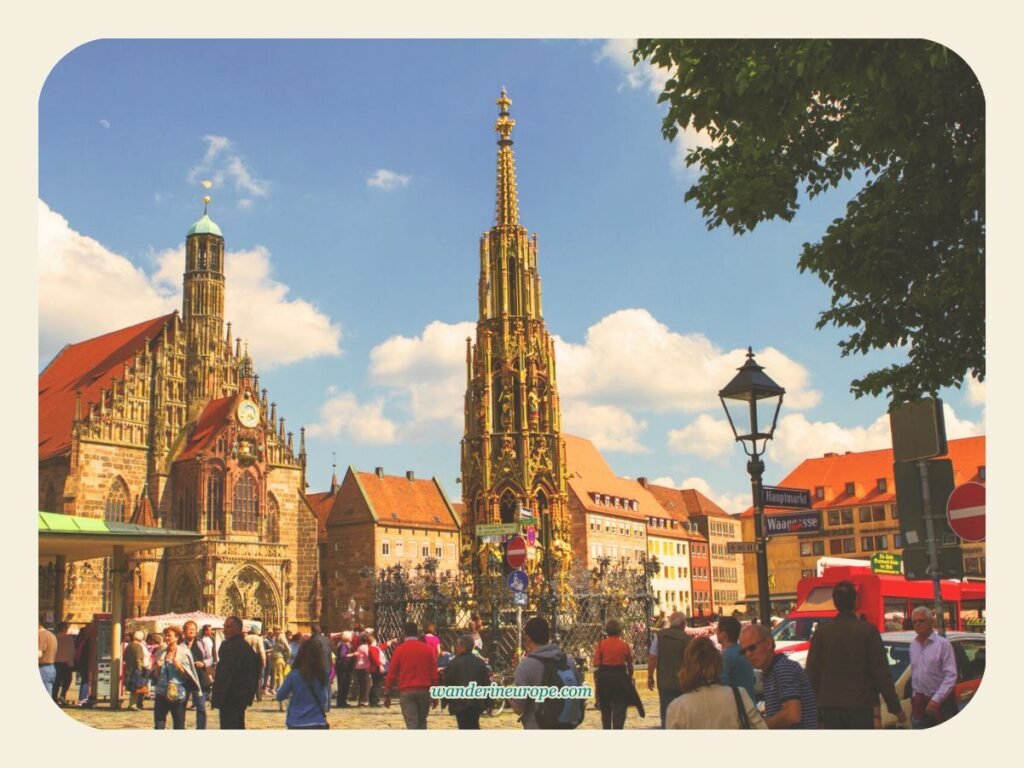

Schlayerturm
One of the hidden gems I discovered in Nuremberg is Schlayerturm. It’s a beautiful spot that makes you feel like you’ve traveled back in time.
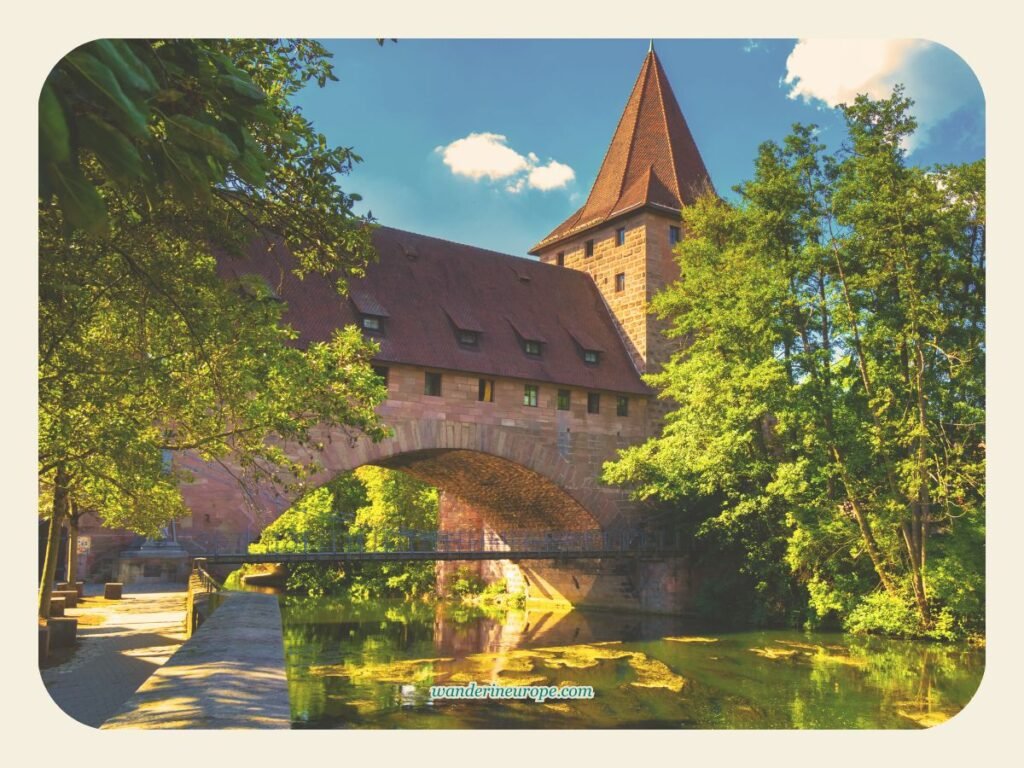
Maxbrücke
So, there’s this bridge in Nuremberg called the Maxbrücke, and it’s got a stunning view for you.

Museumsbrücke
Alright, moving on to the Museumsbrücke in Nuremberg, which is another bridge with picture-perfect views, just a stone’s throw from the Maxbrücke.


More Hidden Gems in Nuremberg
If you’re into more than just the picture-perfect spots and interesting fountains in Nuremberg, you might want to spend a day exploring more hidden gems. These places are quaint, intriguing, and peaceful. Check out some of the hidden gems I’ve discovered in Nuremberg below.
Make Nuremberg Worthwhile
Hey, what do you think about these cool photo spots and hidden gems I found in Nuremberg?
Well, there’s so much more to see there, and I’ve got a guide to help you explore it all. In my discovery guide to Nuremberg, I’ll not only cover the top attractions but also the stunning churches, awesome museums, and events that’ll help you pick the best time to visit.
If you’re planning a trip, here are some handy tips and resources from WanderInEurope to maximize your experience:
- 1-day itinerary for a quick tour of Nuremberg in different styles.
- 2-day itinerary that adjusts to the weather.
- 3-day itinerary for a complete Nuremberg adventure.
- How many days to visit Nuremberg?
First time to visit and you want to make your own plan? Check out this list of top things to do in Nuremberg for first-timers. Enjoy your trip to Nuremberg!
From great hotel deals to skip-the-line tickets and affordable eSim to cheap rentals, click here for the best hotel deals and more travel discounts.
For a convenient, unique, or more enriching visit, check out these experiences and services:


Pin this to save it for later or bookmark it to read anytime.


